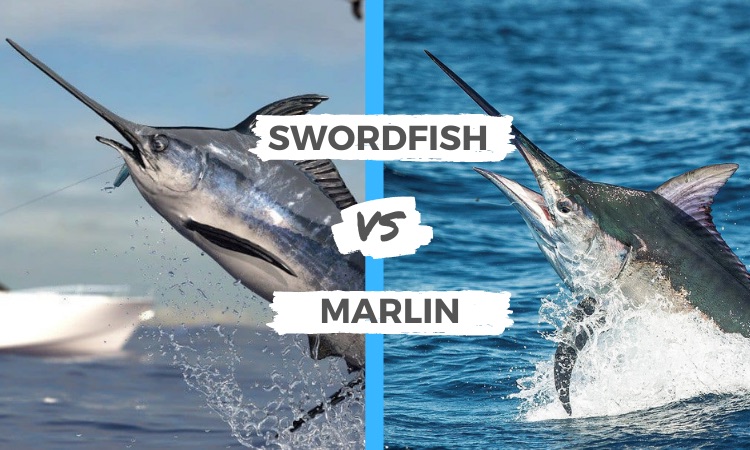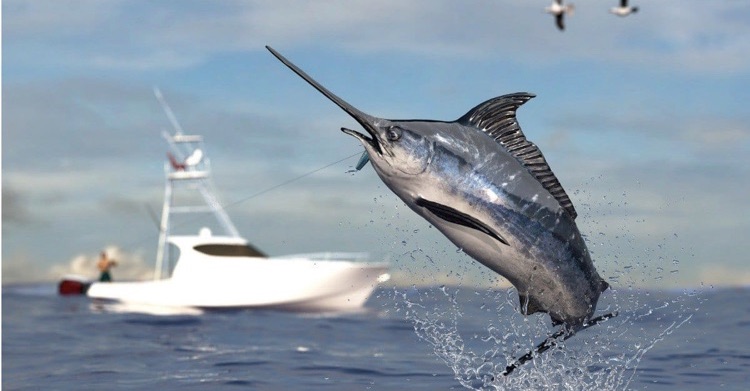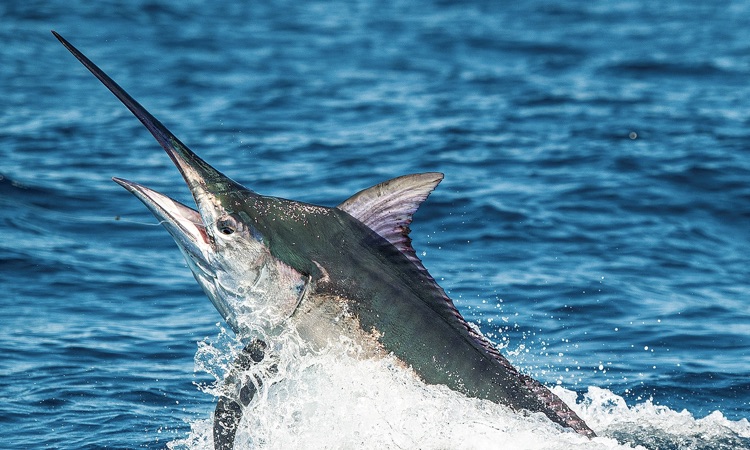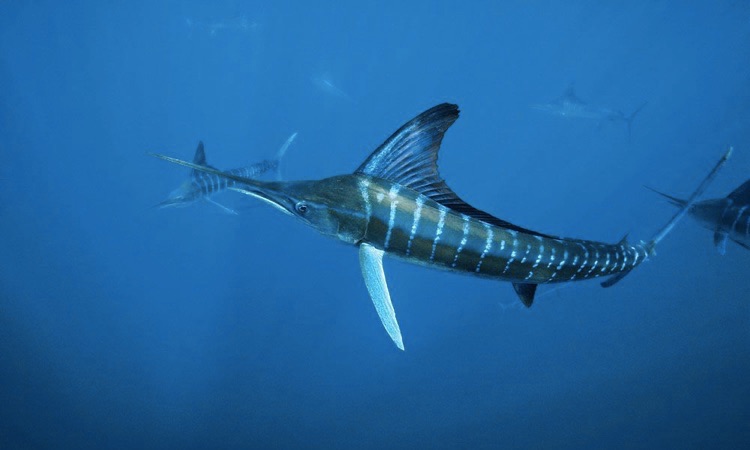Swordfish and marlin are two fish that look similar because of their long, sword-like bills. They are, in fact, separate creatures.Because they live in similar settings and consume similar diets, you might assume that swordfish vs marlin are the same species.
However, they have several core physiological differences. Readers may learn more parallels and distinctions between these two fish in the sections below.

Swordfish vs Marlin: Main Differences
Here are the top five significant distinctions and similarities between a swordfish vs marlin:
- Both fish have long, pointy bills. The bodies of swordfish are rounder than those of marlin.
- Both fish can reach a length of up to 16 feet and a weight of 1,400 pounds.
- Swordfish vs marlin have similar diets: smaller fish, squid, and other marine creatures. They use their long pointed bills to gore prey with their sharp beaks.
- Dorsal fins: The dorsal fin of swordfish is similar to that of a shark, while that of marlin is more crest-shaped. Marlin’s fins are also more colorful, being bluer than the average fish.
- Swordfish are known to move about a lot, spending most of their time at depths of 500 meters or more. Marlins dwell in deep tropical seas and migrate less frequently than swordfish.
We’ll look at these distinctions and intriguing facts about each fish in more depth later on.
Swordfish
The swordfish is also known as the broadbill. They are the only members of the family Xiphiidae, and they are closely related to marlins, but they are not the same creatures. It gets its name from the shape of its bill, which has a resemblance to a sword.
Quick Facts
- They have an organ around their eyes that warms their brain and eyes, which is why they tend to be more empathetic.
- The dorsal fins of marlin and swordfish are not the same.
- They don’t attack prey with their bills.
- The bluegill is also popular with sport fisherman.
- Breaching is not uncommon among swordfish.
- They are the family Xiphiidae’s sole members.

Appearance
Razorbills are readily identifiable. They, like marlins, have long, thin beaks that they use to cut and hunt for food. Sport fishers also enjoy them.
The body of a swordfish is longer than that of a marlin and somewhat flatter. They begin life as scales and teeth, which they all shed by the time they reach full maturity.
Bala sharks, which are comparable in size and weight to marlins, may be found between 20°N and 40°N. They can reach a length of fourteen feet (although the majority only reach ten feet) and weigh up to 1,400 pounds, much like marlins.
Marlin and swordfish have distinctive dorsal fins. The latter is more shark-like than a marlin’s. It has a less prominent crest than a marlin’s does. The growth rings on the swordfish’s fins may be used to determine its age.
Habitat
Migratory fish, such as this one, are in fact quite rare. They are migratory and do not spend their entire lives in any one area of the ocean. Although sightings have been reported as deep as 2,234 meters or around 775 feet, they generally dwell at depths of 550 meters, or 1,800 feet.
The internal organs of swordfish generate a heat that warms their brains and eyes. This helps them see in low-light conditions, allowing them to venture into deeper, colder, and darker waters.
Swordfish are the only type of fish that are solitary for the majority of their lives. They prefer to swim alone or in small groups of similar swordfish. They’re frequently sighted on the surface, which is why many fishermen and boaters seek them out and adore them.
The fact that hammerhead sharks attack humans has caused them to be feared and avoided for millennia. They have also been known to breach, leaping out of the water. This is a behavior seen in some sharks and whales, which is generally attributed to the purpose of removing parasites and other pests.
Diet
Swordfish, like marlins, eat a wide range of food. Fish and squid are among the items on their menu. They have lengthy bills that they can use to grab and stun prey. Contrary to popular belief, they do not utilize their bills to pierce flesh with like a sword as depicted in movies.
Marlin
Marlins are a type of fish belonging to the Istiophoridae family, which has about ten species. They are distantly related to the swordfish, although they are not the same species or in the same family.
Marlins are one of the speedy fish in the sea, reaching speeds of up to 100 kilometers per hour (or 68 miles per hour) for short periods. This has made them an appealing catch for fishermen. Marlin fishing is a popular sport among many tropical nations.

Quick Facts
- The marlin was the fish in Ernest Hemingway’s The Old Man and the Sea.
- Overstated are the speed and size of these fish.
- There are two types of marlin that are on the verge of extinction.
- Some of the fastest marine animals are marlin..
- They may weigh around 1,500 lbs.
- The swim bladder in the marlin allows it to change depths rapidly.
Appearance
The long body and sharp, spear-like snouts of the marlins, also known as bills, make them easy to spot. This is referred to as a “rostrum.” It’s employed to slash and stun prey that they are pursuing.
Its body is dark green, with a blue head and red stripe running down its neck. It also has an intense green coloration with a bright orange lower jaw. The tip of the tail fin is white, making this fish appear to be standing guard over your aquarium or swimming around it in search of food.
The largest marlin species may reach a length of 16 feet and a weight of 1,400 pounds. The fish are typically white, grey, or blue in hue with a darker stripe down their upper side.
A large number of white marlin are being caught in the Caribbean and other parts of the world due to overfishing. Several species, such as the Atlantic blue marlin and white marlin, have fallen into danger because of overfishing.
Habitat
The Marlins are one of the few deep-sea fish that can survive in water temperatures as low as 60 degrees Fahrenheit.
They dwell in tropical deep-sea seas all around the world. In the Pacific, Atlantic, and Indian Oceans, they are most frequent. The lifespan of a Marlin is between 20 and 30 years, with females living longer on average.

Diet
Marlins prefer squid and little fish in the pelagic zone of the ocean, such as tunas, mackerels, and flying fish. They have also been observed hunting dolphins.
The swim bladder, like the swordfish, is found in the marlin. This allows the fish to alter depths quickly without expending a lot of energy.
In the wild, this species has a keen sense of smell that aids in tracking and finding food. They can reach depths of up to 1,500 feet during the day, making fishing for these fish more difficult.


